

We’ve already seen how your culture, or the environment and society in which you live, shapes what you eat. However, the time in which you live also affects your food choices.

Some of the foods that you eat might not have been around when your parents were kids. Let’s take chicken nuggets, for example. Although chicken nuggets were invented in the 1950s, they didn’t really become popular until the late 1970s, when McDonald’s started serving them. Now it’s hard to imagine a kid never having eaten one.
Some foods have changed over time. In an earlier chapter, you read about the way marshmallows and chocolate have been transformed over the years. Other foods, however, have endured almost unchanged. The first pretzels, for example, were created more than 1,500 years ago. They taste almost exactly the same as they did then.
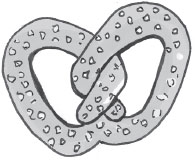
Even though the United States is a young country, many styles of cooking have already come and gone. Immigrants brought foods and cooking techniques from other countries. Since they had to adapt to the ingredients available here, they had to get creative with their cooking. As a result, America has produced some unique types of food.
Long before the colonists arrived from Europe, Native Americans lived in North America. They lived in many different environments, from the dry Southwest and rainy Northwest to the forested Northeast. So they ate a wide variety of foods. The Native Americans responded to seasonal cycles and demonstrated great resourcefulness in their food choices.
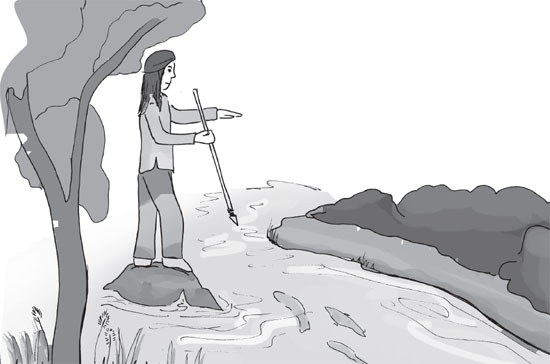

Recipes for beer and bread were created as long as 12,000 years ago.
For meat, many Native American tribes relied on deer, called venison, since white-tailed deer were so plentiful. They also hunted squirrels, as well as fish and seals. On the Great Plains, tribes hunted bison for meat, too.
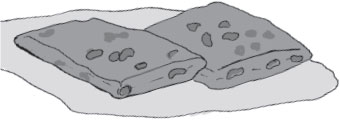
When fresh meat wasn’t available, or when they were traveling, Native Americans depended on pemmican, which is dried meat and fruits pounded into a paste. They shaped this paste into bars, so they could easily carry it with them.
In the 1600s, colonists from Europe settled on the East Coast of the (future) United States. The colonists quickly discovered that the soil wasn’t as good as the soil in Europe. Moreover, the growing season was very short in the North. In the South, the growing season was longer, so the colonists could grow more foods. But the warm weather spoiled foods quickly.
The New World was a major challenge, food-wise, for the colonists. They didn’t have food markets or shops, and some of the crops that they were used to growing didn’t survive in the different climate and soil of North America. The settlers learned to use corn in foods like cornbread, hominy, and grits.
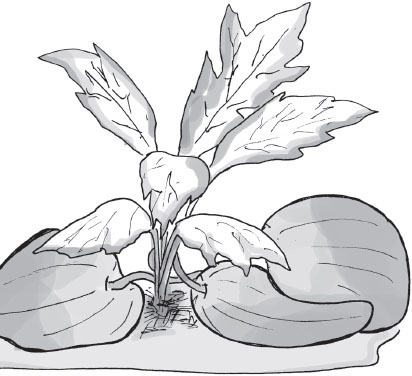

When Native Americans killed an animal for food, they thanked it for giving up its life for them.
When settlers started heading West, they had to give up a lot of their comforts. They could only bring limited supplies of food, including flour, dried beans, coffee, and sugar with them. As a result, they had to make meals without these provisions or find ways to extend what little they had.
Without access to stoves, they also had to eat foods that didn’t need cooking or could be prepared easily over a campfire. To cook foods over the fire, the pioneers used cast iron Dutch ovens. These were heavy pots with lids that could also be used as skillets. The meals of the pioneers could get very creative, as they had to make do with what they had.
All over the United States, the population was growing quickly. As a result, the number of houses and settlements under construction skyrocketed. The need for wood created a strong demand for lumberjacks.
These groups of men moved between lumber camps, cutting down trees. They did all the work by hand, without modern equipment. Lumberjacks had to be strong and physically fit. As a result, they had to eat well.
The person responsible for feeding the lumberjacks was the camp’s cook. With some assistance from his helpers, he prepared a hearty breakfast of pancakes, oatmeal bread, fried eggs, ham, bacon, and lots of coffee.
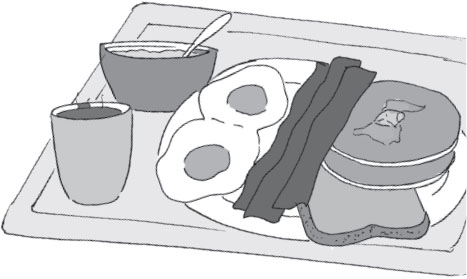
Axle grease … Butter
Bait can … Lunch pail
Bean burner … Bad cook
Devil’s cup …Atin cup without a handle, that become scalding hot when filled with fresh coffee
Fly bread … Raisin bread
Mud … Coffee
Tar … Really bad coffee
The lumberjacks usually ate lunch out in the woods. When they returned to camp, they were ravenous after a hard day’s work. For dinner, the cook would supply them with large quantities of meat, beans, potatoes, and bread or biscuits. Sometimes, if the lumberjacks were lucky, the cook would make cakes or cookies to eat for dessert.

Pioneers on the Oregon Trail paid about 17 cents a pound for coffee. Today’s coffee is around 6 dollars a pound-or more!
Like lumberjacks, cowboys had hard, physically demanding jobs. They drove large herds of cattle from the ranches in Texas to markets that might be as far north as Montana and North Dakota. After rounding up the cattle, they’d begin the long journey.
Of course there weren’t any drive-through restaurants on the trail, so a cook rode along with them. The cook was second in command only to the boss. All the cowboys treated the cook with respect, so he’d feed them well in return.
The cook’s kitchen, called the chuck wagon, contained all the food and cooking equipment. It was filled with flour, sugar, beans, coffee, canned goods, and dried fruit. With those limited supplies, the cook had to pull together meals for all the hungry cowboys.
Airtights … Canned goods, like tomatoes or peaches
Prairie Strawberries … Beans
Hot rocks … Biscuits
Gargle or Java … Coffee
Hen fruit … Eggs
Texas butter… Gravy
Lick … Molasses
Skunk eggs … Onions
The prized possession of any cowboy cook was his Dutch oven, the same pot used by the pioneers. With it, the cook could make cornmeal mush, biscuits, refried beans (something Mexican cooks introduced to Texan cowboys), chili, and cobblers. This is a dessert that has fruit on the bottom and a crumbly or pastry topping.
Lumberjacks and cowboys lived a rough life, but it was nothing compared to what soldiers in the Civil War experienced in the 1860s. Soldiers could only carry small amounts of food, and the military often had difficulty getting supplies to them.
The soldiers sometimes received salted or smoked meat and dried or canned fruits and vegetables. However, their daily allowance of food, called rations, wasn’t cooked. The soldiers had to figure out a way to cook it themselves. For the most part, they survived on meat, coffee, sugar, and a dried biscuit called hardtack.
CIVIL WAR FOOD WORDS
Salt horse … Salted meat
Grab a root… Eat a meal, a potato
Long Sweetening … Molasses
Goobers … Peanuts
Sheet iron crackers … Hardtack

The cowboy’s cook had to get up several hours before everyone else to make meals-so he worked longer hours with less sleep out on the trail.
This tough biscuit was carried by soldiers in the Civil War.
1 Preheat the oven to 400 degrees Fahrenheit (205 degrees Celsius).
2 In a large bowl, mix together the flour, water, shortening, and salt to form a stiff batter.
3 Spread the batter out onto a cookie sheet into a rough square that is about a half inch thick. Bake for 30 minutes.
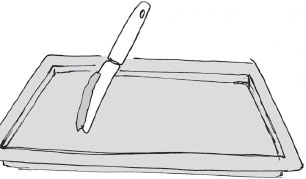
4 Remove the cookie sheet from the oven. Cut the hardtack into 3-inch squares and poke rows of holes evenly over the dough with a fork.
5 Flip the hardtack over and return it to the oven for another 30 minutes. Then turn the oven off. Leave the door closed, and let the hardtack cool in the oven.
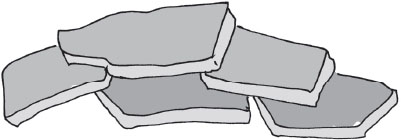
Pemmican was a portable food for many Native Americans.
1 In the food processor or blender, pulse the beef jerky until it’s chopped very finely.
2 Add the dried apple slices and raisins or other dried fruit. Blend the mixture until it is thoroughly combined.
3 Dump the mixture out onto a sheet of waxed paper, and lay another piece of waxed paper on top.
4 With the rolling pin, roll out the pernmiean until it’s about an eighth of an inch thick.
5 Let the pemmican dry. You can leave it out in the sun for one or two days, keeping it pressed between the waxed paper the entire time. Or you can place it on a cookie sheet, removing all the waxed paper, and bake it in an oven at 350 degrees Fahrenheit (175 degrees Celsius) for approximately 2 hours. Either way, make sure to turn the pemmican over every now and then as it dries.
6 When it’s completely dry, you can either cut the pemmican or just break it into pieces. Store it in the refrigerator in a sealed bag or container.